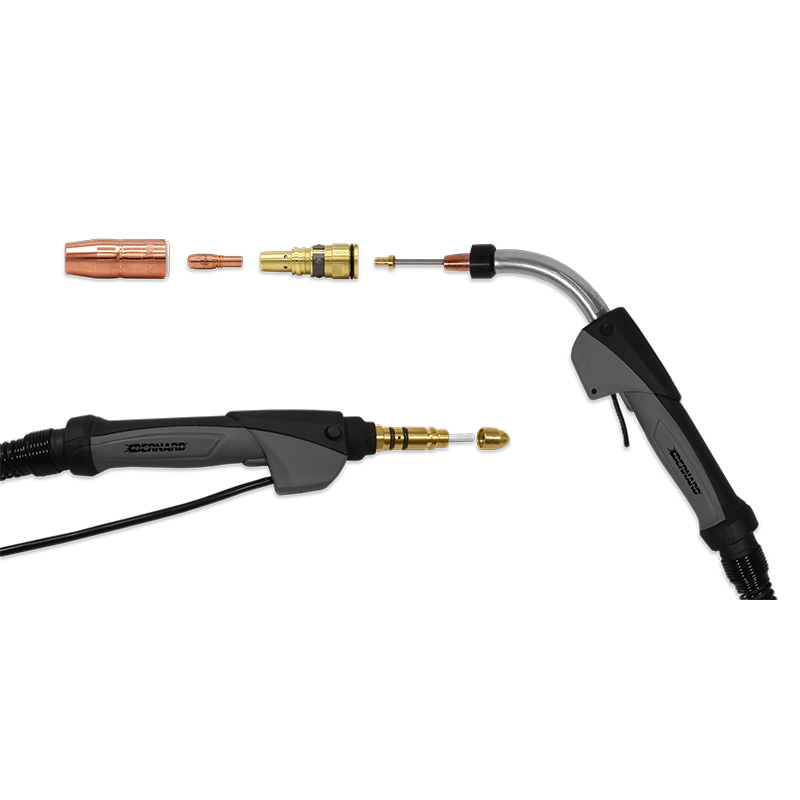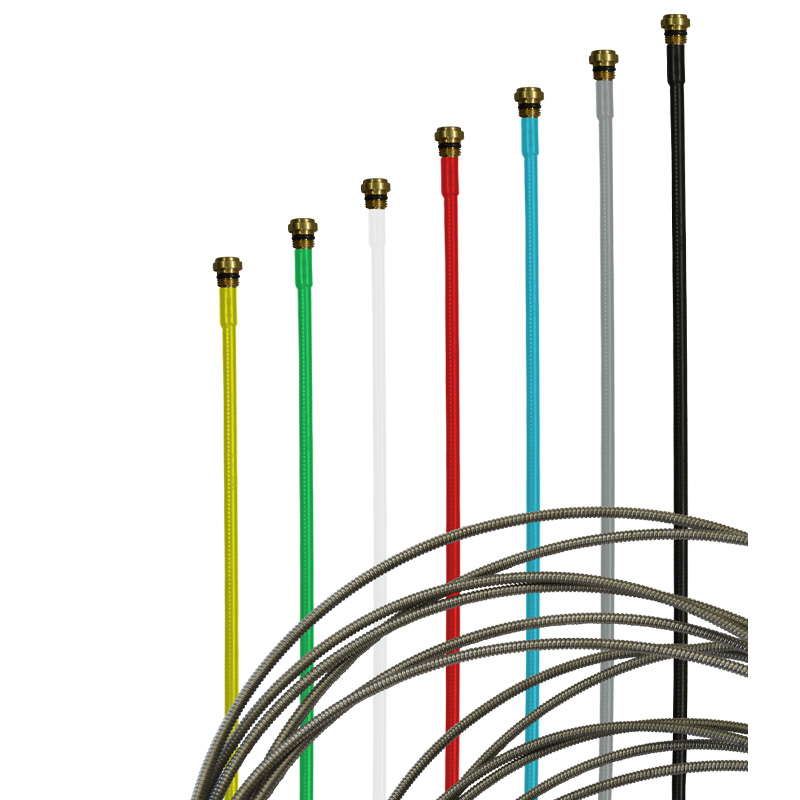Understanding MIG Gun Liners

The liner is both one of the simplest and most important components of a MIG gun. Its sole purpose is to guide the welding wire from the wire feeder, through the gun cable and up to the contact tip. If it is not performing this task properly, the gun is virtually worthless.
A number of problems can interfere with the liner’s ability to properly guide the wire through the welding cable. When the wire does not feed correctly, weld quality problems may arise that lead to increased operator downtime and costly rework.
The following is a discussion to help you get the best performance from your MIG gun liner and troubleshoot problems when they occur.
Optimizing the Performance of Your MIG Gun Liners
There’s an old saying that prevention is the best medicine, and this holds true with MIG gun liners as well. Proactive maintenance can eliminate problems before they arise and reduce operator downtime, more serious equipment failures and costly rework.
Buy quality:
The quality of a liner can also impact your welding performance, productivity and operator downtime. A premium quality liner maintains a consistent inside diameter throughout its length. This is critical because variances as small as a few thousandths of an inch can result in wire feeding problems requiring time-consuming liner replacement.
Choose the right size:
To maximize the performance of your MIG equipment, choose the correct liner size for the wire being used.
Small diameter welding wires, .023-in. through .045-in., have relatively low columnar strength, which, when paired with an oversized liner, can cause the wire to wander or drift within the liner. This in turn leads to poor wire feeding and premature liner failure due to excessive wear.
By contrast, larger diameter welding wires, 1/16-in. through 1/8-in., have much higher columnar strength. Just make sure the liner you choose is large enough to feed the welding wire you are using.
Don’t overdo it:
Most MIG gun liners are made from coiled steel wire, known as music or piano wire, which gives the liner a good balance of rigidity and flexibility and allows it to guide the welding wire through a tightly bent cable without kinking. Nevertheless, bending the cable too much can cause poor wire feeding, premature liner wear and birdnesting (explained below).

Proper replacement: Improperly installing the liner can lead to wire feeding problems such as birdnesting, which results in downtime and reduced productivity. Avoid twisting the cable when trimming the liner, as this can cause it to be too short, resulting in gaps that can lead to erratic wire feeding.
There are also consumables — contact tip, nozzle, gas diffuser and liner — available in the marketplace that allow for error-proof liner installation. The diffuser locks the liner in place and concentrically aligns it with both the power pin and contact tip with no gaps or misalignments (and without the use of fasteners). There is no liner measuring required during installation or replacement. The welding operator or maintenance personnel simply feeds the welding liner through the neck of the gun, locks it in place and cuts the liner flush with the back of the power pin.
Regular maintenance:
Tight bends in the cable increase friction between the liner and the welding wire. This friction makes it more difficult to push the wire through the liner, causing wear and metal fragments to accumulate inside the liner. Eventually these tiny particles can build up and cause serious wire feed blockages. This occurs to a lesser degree even with cables that are not bent tightly, so it’s a good idea to periodically clear out the liner with compressed air.
Troubleshooting Your MIG Gun Liners

Poor or erratic wire feeding, a loss of amperage or frequent contact tip burnback are all signs of liner problems. Unfortunately, because of the time it takes to replace the liner, this is often one of the last components checked during a troubleshooting effort.
Poor wire feeding:
Erratic or poor wire feeding can result when the liner becomes worn out in certain spots, is trimmed incorrectly during replacement or has excessive debris buildup in the liner. Excessive debris can usually be cleared out by removing the wire and forcing compressed air through the liner (without removing it from the cable).
In most cases, a worn out liner will need to be replaced. With a conventional liner, trimming the liner accurately during replacement is critical. Liners trimmed too long or too short can cause wire feeding issues, wire chatter, an erratic arc and/or burnbacks. Using a liner gauge is recommended when trimming a conventional liner. Another option is to use a consumables system that locks the liner in place at the front and back of the gun while concentrically aligning it to the contact tip and power pin. With this type of system, the liner is simply trimmed flush with the power pin at the back of the gun — no measuring required. The result is a flawless, gap-free wire-feeding path.
Birdnesting:
If the welding wire’s path of travel through a MIG gun is blocked while the wire feeder is pushing it, a tangled mess of wire called a birdnest could be the result. A birdnest can be caused by a liner that is trimmed too short, clogged, or the wrong size (too small or large for the wire diameter). The above section on proper liner replacement describes how birdnesting can result from trimming a liner too short.
Electrical short:
The liner is not designed to carry welding current, so a dramatic loss of current at the arc will result if loose cable connections or a degraded cable make it the path of least electrical resistance. One common sign that this has occurred is a discolored liner and excessive heat build up along the power cable. The discoloration is caused by heat and indicates weld current is being carried through the liner instead of the gun’s power cable. A degraded cable will require repair or replacement.
The liner is not visible during normal welding operations, but that doesn’t mean it can be overlooked as a significant factor in weld quality and productivity. Thankfully, performing some very basic maintenance and being able to troubleshoot a malfunctioning liner will help you maintain consistent weld quality and optimum productivity.